Forest genetics researchers to sequence and catalog conifer genes for future biofuels research
 Jeffrey Dean, professor of forest biotechnology in the University of Georgia's Warnell School of Forestry and Natural Resources, is spearheading a project at the U.S. Department of Energy's Joint Genome Institute (JGI) that will greatly expand the gene catalog for pines and initiate the first gene discovery efforts in five other conifer families.
Jeffrey Dean, professor of forest biotechnology in the University of Georgia's Warnell School of Forestry and Natural Resources, is spearheading a project at the U.S. Department of Energy's Joint Genome Institute (JGI) that will greatly expand the gene catalog for pines and initiate the first gene discovery efforts in five other conifer families.The project will be a significant piece of the JGI's Community Sequencing Program, which focuses state-of-the-art genome analysis resources on biological organisms that have implications for helping wean dependence on fossil fuel. An international team of scientists coordinated by the JGI recently succeeded in sequencing the genome of the poplar tree, seen as an important bioenergy crop (earlier post). Other crops under investigation are Eucalyptus, cassava, sorghum as well a wide range of microorganisms that could be used for bioconversion processes (overview and more on sequencing bacteria, here).
The wood from conifers will almost certainly be an important component of this nation's biomass energy strategy. but despite extensive commercial plantations they remain essentially an undomesticated species. Information from this project will greatly enhance the ability of our tree improvement programs to develop pines tailored to suit the needs of the future bioenergy industry. - Jeffrey Dean, professor of forest biotechnology, Warnell School of Forestry and Natural ResourcesThe goal of Dean's research is to produce a comprehensive catalog of all the genes expressed as conifers grow, develop and respond to their environments. By comparing genes expressed by different conifer species in similar tissues under similar conditions, scientists will be able to more quickly identify the key genes controlling tree growth and development. Such studies will also improve our understanding of the formation of biomass components such as lignin that impede production of biofuels from lignocellulosic materials, including wood.
Although the JGI recently produced a complete genome sequence for poplar, the first woody perennial plant species so characterized, that information has certain limitations for comparison to conifer species, which diverged from poplars and other flowering plants while dinosaurs still dominated the Earth:
 energy :: sustainability :: biomass :: bioenergy :: biofuels :: conifers :: lignocellulose :: genomics :: energy crops :: plant biology :: Joint Genome Institute ::
energy :: sustainability :: biomass :: bioenergy :: biofuels :: conifers :: lignocellulose :: genomics :: energy crops :: plant biology :: Joint Genome Institute ::Complete sequencing of a conifer genome is still a ways off since their genomes are typically enormous, but a complete catalog of expressed conifer genes would still be a watershed for our ability to study, predict and understand how conifer genetics have contributed to the survival of these magnificent trees through hundreds of millions of years.
While final details on specific species and numbers of sequences are still being worked out, Dean, the lead investigator, and his four co-investigators David Neale (University of California, Davis), Glenn Howe (Oregon State University), Kathleen Jermstad (USDA Forest Service) and Deborah Rogers (Center for Natural Lands Management), will focus much of their initial efforts on loblolly pine, a conifer native to the southeastern United States and a species that by itself is responsible for approximately 16 percent of the world's annual timber harvest.
Loblolly pine is a primary target for this research project because of its current commercial importance in the southeastern United States, as well as its potential for providing biomass to future biofuels markets, Dean said.
Other targeted species for the project include coast redwood, one the fastest growing conifers, and Wollemia nobilis, a species related to the Norfolk Island pine that was thought extinct until a small grove was discovered in Australia in 1994. More than fifty research laboratories from around the world have pledged their support for this project. They, along with many others, will benefit from immediate access to all gene sequences from the project, all of which will be available online as they are produced at JGI.
Picture: loblolly pine (Pinus taeda). In the Southern U.S. there is more timberland - at least 182 million acres - than cropland and pasture combined. Approximately one-third of the South is covered with pine trees. Loblolly pine is by far the most abundant species, grown commercially for timber. With the advent of second-generation bioconversion technologies, the biomass crop becomes an important biofuel source.
References:
University of Georgia: UGA forest genetics researcher leads effort to sequence and catalog conifer genes for future biofuels research - August 17, 2007.
Biopact: Joint Genome Institute announces 2008 genome sequencing targets with focus on bioenergy and carbon cycle - June 12, 2007
Biopact: U.S. DOE to sequence the DNA of six photosynthetic bacteria to make biofuels - October 11, 2006
Article continues
 --------------
--------------
 Taiwan's Feng Chia University has succeeded in boosting the production of hydrogen from biomass to 15 liters per hour, one of the world's highest biohydrogen production rates, a researcher at the university said Friday. The research team managed to produce hydrogen and carbon dioxide (which can be captured and stored) from the fermentation of different strains of anaerobes in a sugar cane-based liquefied mixture. The highest yield was obtained by the Clostridium bacterium.
Taiwan's Feng Chia University has succeeded in boosting the production of hydrogen from biomass to 15 liters per hour, one of the world's highest biohydrogen production rates, a researcher at the university said Friday. The research team managed to produce hydrogen and carbon dioxide (which can be captured and stored) from the fermentation of different strains of anaerobes in a sugar cane-based liquefied mixture. The highest yield was obtained by the Clostridium bacterium.

 The Indonesian government says it will launch a pilot 'Community Integrated Utility Program' (CIUP) to provide power, potable water and telecommunications for people living in disadvantaged and remote regions across the vast archipelago. The systems are based on stationary fuel cells that will be powered by locally produced biohydrogen. Ethanol production would be integrated into the concept.
The Indonesian government says it will launch a pilot 'Community Integrated Utility Program' (CIUP) to provide power, potable water and telecommunications for people living in disadvantaged and remote regions across the vast archipelago. The systems are based on stationary fuel cells that will be powered by locally produced biohydrogen. Ethanol production would be integrated into the concept.
 Liuling Yan, a Chinese scientist working at Oklahoma State University’s Division of Agricultural Sciences and Natural Resources, is making major
Liuling Yan, a Chinese scientist working at Oklahoma State University’s Division of Agricultural Sciences and Natural Resources, is making major 
 French engineering group
French engineering group 


 More and more organisations are becoming convinced of the fact that biofuels can help lift millions of poor farmers out of poverty, boost their access to food and energy, and offer economic development and energy security. Most recently, the UN's Food and Agriculture Organisation (FAO) called for the creation of a 'biopact' between the North and the South, saying biofuels offer a historic chance to alleviate poverty in the developing world (
More and more organisations are becoming convinced of the fact that biofuels can help lift millions of poor farmers out of poverty, boost their access to food and energy, and offer economic development and energy security. Most recently, the UN's Food and Agriculture Organisation (FAO) called for the creation of a 'biopact' between the North and the South, saying biofuels offer a historic chance to alleviate poverty in the developing world ( There have been dramatic developments in the oil market, according to the latest Oil Market Report from the International Energy Agency (IEA). Everything is pointing to an impending supply shortage, which could lead to record prices (
There have been dramatic developments in the oil market, according to the latest Oil Market Report from the International Energy Agency (IEA). Everything is pointing to an impending supply shortage, which could lead to record prices (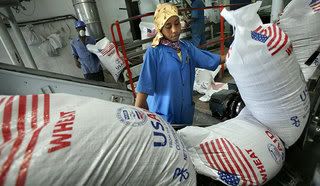
 Global warming occurs when greenhouse gases, such as carbon dioxide from burning fossil fuels, build up in the atmosphere and alter outgoing longwave radiation. Scientists have proposed different 'geoengineering' options to tackle the problem, in case governments, industry and citizens do not succeed in reducing their greenhouse gas emissions.
Global warming occurs when greenhouse gases, such as carbon dioxide from burning fossil fuels, build up in the atmosphere and alter outgoing longwave radiation. Scientists have proposed different 'geoengineering' options to tackle the problem, in case governments, industry and citizens do not succeed in reducing their greenhouse gas emissions. An interesting debate on the long-term future of nuclear energy comes from Belgium, where a new government is currently being formed. Biopact is collaborating with parties there to propose a strong alternative to nuclear electricity: the creation of a (virtual) green reserve of biomass to be established in the Democratic Republic of Congo. This biomass, transformed into biofuels with a high energy density, will be imported and used in dedicated, highly efficient cogeneration plants. The plan is backed by the social-democrats and by the former chief of Greenpeace Belgium. It represents a first concrete example of a genuine 'biopact' - a win-win strategy that brings development to the South, and energy security and climate-friendly electricity to the North.
An interesting debate on the long-term future of nuclear energy comes from Belgium, where a new government is currently being formed. Biopact is collaborating with parties there to propose a strong alternative to nuclear electricity: the creation of a (virtual) green reserve of biomass to be established in the Democratic Republic of Congo. This biomass, transformed into biofuels with a high energy density, will be imported and used in dedicated, highly efficient cogeneration plants. The plan is backed by the social-democrats and by the former chief of Greenpeace Belgium. It represents a first concrete example of a genuine 'biopact' - a win-win strategy that brings development to the South, and energy security and climate-friendly electricity to the North. Since we launched the proposition years ago of a 'Biopact' in which the wealthy North imports efficient biofuels made in the South, virtually all global policy and institutional levels, from the
Since we launched the proposition years ago of a 'Biopact' in which the wealthy North imports efficient biofuels made in the South, virtually all global policy and institutional levels, from the 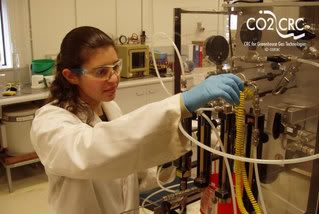


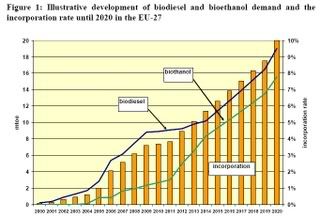
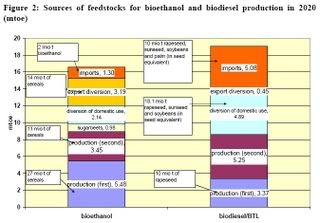
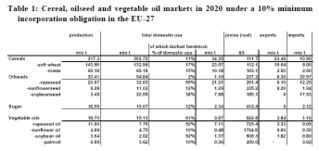
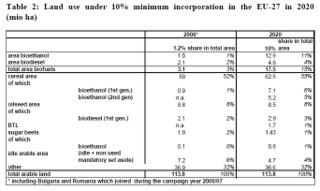
 Japan's government-affiliated
Japan's government-affiliated  In what is seen as a major success for Brazil's president Luiz Inácio Lula da Silva, new figures show that the deforestation rate in the Amazon has decreased by 25 percent between August 2005 and July 2006, despite high commodity prices and rapidly growing demand for crops like soybeans. The
In what is seen as a major success for Brazil's president Luiz Inácio Lula da Silva, new figures show that the deforestation rate in the Amazon has decreased by 25 percent between August 2005 and July 2006, despite high commodity prices and rapidly growing demand for crops like soybeans. The 
 U.S. farmers are
U.S. farmers are 




 An interesting exercise on assessing public acceptance of biofuels comes from Helsinki, Finland. There, a public consultation and a poll was organised to assess citizen's opinions on the proposal by city-owned utility
An interesting exercise on assessing public acceptance of biofuels comes from Helsinki, Finland. There, a public consultation and a poll was organised to assess citizen's opinions on the proposal by city-owned utility  Soaring prices of fossil-fuels and environmental pollution associated with their use, have resulted in an increased worldwide interest in the production and use of biofuel. The
Soaring prices of fossil-fuels and environmental pollution associated with their use, have resulted in an increased worldwide interest in the production and use of biofuel. The  During his recent 'biofuel tour' of Central America, Brazil's President Lula visited Jamaica, where his country's Coimex Group operates an ethanol plant together with Petrojam, the island state's national oil company (
During his recent 'biofuel tour' of Central America, Brazil's President Lula visited Jamaica, where his country's Coimex Group operates an ethanol plant together with Petrojam, the island state's national oil company (










Saturday, August 18, 2007
Community based biodiesel production in Ghana brings power, drinking water and transport fuels
Last month a team from the United States traveled to Dumpong, a small village near Aburi, to work with the cooperative to build a small processor to convert locally grown and extracted palm kernel oil into biodiesel. The production costs of the biodiesel are approximately 25% less than the current price for diesel fuel.
By working with community based palm oil processors and with local labor the project brings additional income and quality of life improvements to the nearby villages (slideshow).
Jerry Robock, team leader from the U.S. who helped the cooperative, says the biodiesel is obtained by very basic equipment via transesterification. Glycerine is a byproduct from the process that can be utilized locally to make soap. The pilot project cost between US$ 600 and 1000 and can be replicated in many other rural communities and similar villages.
The small biodiesel processor was built on the farm of Frank Aidoo, president of the Dumpong Pineapple Growers. The processor comprises two 200 liter steel drums welded together with an electric heating element screwed through one opening. Additional piping and a small electric pump were added to pump palm kernel oil and a solution of methanol with potassium hydroxide into the processor, then circulate the mixture and finally pump the biodiesel into a washing tank:
The processor was built over two days and production began immediately. Over the next three days 550 liters of golden biodiesel was produced which has already been used to power a generator and to fuel the farm’s vehicles.
After the palm oil is processed into biodiesel it is washed to remove any impurities or unconverted reagents. It is then ready to be used as a substitute for diesel fuel. Due to the solvency quality of biodiesel it must initially be blended with diesel fuel as it works to clean the fuel system of the vehicle. Fuel filters will need to be changed at the start but biodiesel will actually clean the fuel system to make the vehicle perform more efficiently. Biodiesel can be mixed with diesel fuel in any proportion and there is no modification to the engine to use this fuel.
Some biodiesel will be used to power a generator that currently pumps water for a small sachet water (bottling) plant that provides clean drinking water. Frank plans to use this new fuel source to allow him to pump water to a storage tank in the nearby village to eliminate the current practice of sourcing water from a nearby stream.
The palm kernel oil is sourced from a neighboring village where palm kernel nuts are cracked to extract the palm nut. The palm nut is then crushed and boiled over a fire of palm kernel husks to separate the palm oil, which is then gathered and stored. The palm oil used for biodiesel is not further refined.
Dumpong Biofuels strategy is to take advantage of locally available oilseed crops, to included jatropha and sunflower seed, to convert into an environmentally renewable and sustainable fuel to be used locally to replace imported and dirty diesel fuel.
Images courtesy of Dumpong Biofuels.
References:
Dumpong Biofuels homepage.
Dumpong biofuels: original project proposal [*.pdf].
Dumpong Biofuels: photo galleries.
Article continues
posted by Biopact team at 7:11 PM 0 comments links to this post
